Table of Contents
Famous Native Americans
Some names to know: Squanto, Metacomet (King Philip), Powhatan, Pocahontas, Sacagawea, Pontiac, Osceola, Cochise, Geronimo, Sitting Bull, Crazy Horse, Chief Joseph, Tecumseh, Black Elk, Sequoyah, Red Cloud, Jim Thorpe, Maria Tallchief, Wilma Mankiller.
See 13 Important Native Americans You Didn’t Learn About in School.
From Biography, see 12 Influential Native American Leaders.
 |
By Joseph Bruchac, A Boy Called Slow (Puffin, 1998) is a picture-book story of the boy who became Sitting Bull. For ages 5-9. |
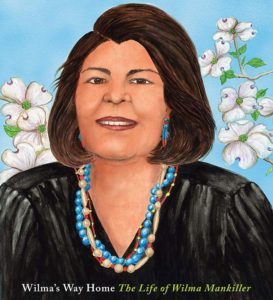 |
By Doreen Rappaport, Wilma’s Way Home (Little, Brown, 2019) is a picture-book version of the life of Wilma Mankiller, first female chief of the Cherokee tribe, an activist who worked to promote Native American rights in the 20th century. For ages 6-11. |
 |
By Jean Fritz, The Double Life of Pocahontas (Puffin, 2002) is a fictionalized but well-researched biography of the young girl who ended up torn between two cultures. The compelling narrative moves back and forth among the perspectives of Powhatan, Pocahontas, and John Smith. For ages 8-12. |
|
From Smithsonian magazine, see The True History of Pocahontas. |
|
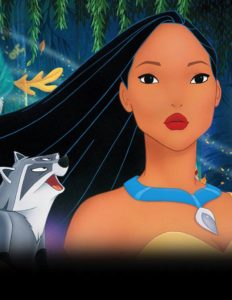 |
Historically, Disney’s Pocahontas (1995) (rated G) has a lot of problems, but it’s entertaining. Sophie Gilbert in Revisiting Pocahontas at 20 points out, in its favor, that it delivers an environmental message and is the first ever Disney move starring an adult female and a woman of color. |
|
From The Atlantic, Does Disney’s Pocahontas Do More Harm Than Good? |
|
 |
By Ann McGovern, Native American Heroes (Scholastic, 2013) is a gripping triple biography of Osceola, Tecumseh, and Cochise, supplemented with primary source materials including photos, maps, and portraits. For ages 8-12. |
 |
Joseph Marshall’s In the Footsteps of Crazy Horse (Amulet Books, 2015) is the story of a road trip or “vision journey,” taken by Jimmy McLean, a young Lakota boy, and his grandfather, Nyles High Eagle. In the course of the journey, Jimmy’s grandfather recounts the life story of the heroic warrior Crazy Horse – the last of his people to surrender to the U.S. Army. For ages 9-12. |
 |
Joseph Bruchac’s Talking Leaves (Puffin, 2017), set in the 1820s, is the fictionalized story of Sequoyah and the invention of the Cherokee alphabet, told from the point of view of Sequoyah’s 13-year-old son. For ages 9-12. |
Native American Poetry
 |
By Joseph Bruchac, Thirteen Moons on Turtle’s Back (Puffin, 1997) is a collection of poems about the Native American lunar months, beginning with the shivery Moon of Popping Trees. For ages 4-9. |
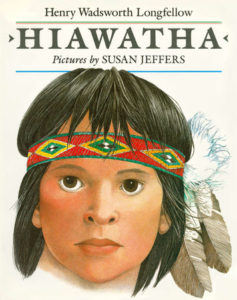 |
Hiawatha (Puffin, 1996), exquisitely illustrated by Susan Jeffers, is a picture-book introduction to Henry Wadsworth Longfellow’s famous poem for ages 4-8. The complete Song of Hiawatha, which is 250+ pages long, is available at Project Gutenberg. |
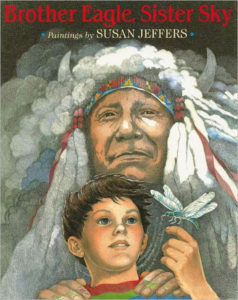 |
By Susan Jeffers, Brother Eagle, Sister Sky (Puffin, 2002) is a poetic picture-book version of the powerful speech given by Chief Seattle of the Suquamish tribe in 1854. “How can you buy the sky?/How can you own the wind and rain?” A beautiful book for all ages. |
 |
By Joseph Bruchac, The Earth Under Sky Bear’s Feet (Puffin, 1998) is a collection of 12 poems detailing what Sky Bear – also known as the Big Dipper – sees on the earth below. Beautifully illustrated with paintings by Thomas Locker. For ages 5 and up. |
|
From the Academy of American Poets, see Poems for Native American Heritage Month and Native American Heritage Month: Poems for Kids. |
|
 |
By N. Scott Momaday, The Way to Rainy Mountain (University of Mexico Press, 1976) is a blend of poetry, memoir, history, and folklore, as the author explores his Kiowa heritage. For teens and adults. |
 |
In 2019, Joy Harjo, a member of the Muscogee/Creek nation, became the first Native American to hold the position of United States Poet Laureate. Many of her poems have Native American themes. See An American Sunrise (W.W. Norton, 2020). |
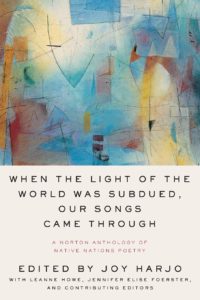 |
Edited by Joy Harjo, When the Light of the World Was Subdued, Our Songs Came Through (W.W. Norton, 2020) is a rich anthology of Native American poetry by 161 poets from 90 indigenous nations. For teens and adults. |
